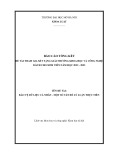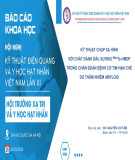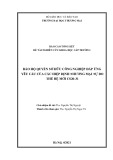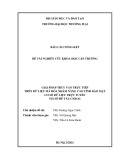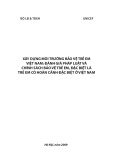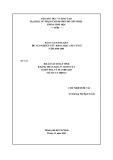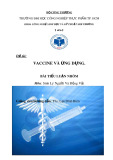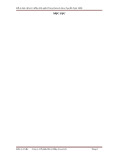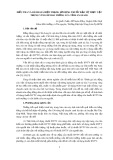
BioMed Central
Page 1 of 13
(page number not for citation purposes)
Journal of Nanobiotechnology
Open Access
Research
Potential therapeutic application of gold nanoparticles in B-chronic
lymphocytic leukemia (BCLL): enhancing apoptosis
Priyabrata Mukherjee*1,4, Resham Bhattacharya1, Nancy Bone2, Yean K Lee2,
Chitta Ranjan Patra1, Shanfeng Wang3,4, Lichun Lu3,4, Charla Secreto2,
Pataki C Banerjee1, Michael J Yaszemski3,4, Neil E Kay2 and
Debabrata Mukhopadhyay1,4
Address: 1Department of Biochemistry and Molecular Biology, 200 1st Street, Mayo Clinic Rochester, MN-55905, USA, 2Department of Medicine,
Division of Hematology, 200 1st Street, Mayo Clinic Rochester, MN-55905, USA, 3Department of Orthopedic Research, 200 1st Street, Mayo Clinic
Rochester, MN-55905, USA and 4Department of Biomedical Engineering, 200 1st Street, Mayo Clinic Rochester, MN-55905, USA
Email: Priyabrata Mukherjee* - mukherjee.priyabrata@mayo.edu; Resham Bhattacharya - bhattacharya.resham@mayo.edu;
Nancy Bone - bone.nancy@mayo.edu; Yean K Lee - Lee.yean@mayo.edu; Chitta Ranjan Patra - patra.chittaranjan@mayo.edu;
Shanfeng Wang - wang.shanfeng@mayo.edu; Lichun Lu - lu.lichun@mayo.edu; Charla Secreto - secreto.charla@mayo.edu;
Pataki C Banerjee - bandyopadhyay.pataki@mayo.edu; Michael J Yaszemski - yaszemski.michael@mayo.edu; Neil E Kay - kay.neil@mayo.edu;
Debabrata Mukhopadhyay - mukhopadhyay.debabrata@mayo.edu
* Corresponding author
Abstract
B-Chronic Lymphocytic Leukemia (CLL) is an incurable disease predominantly characterized by
apoptosis resistance. We have previously described a VEGF signaling pathway that generates
apoptosis resistance in CLL B cells. We found induction of significantly more apoptosis in CLL B
cells by co-culture with an anti-VEGF antibody. To increase the efficacy of these agents in CLL
therapy we have focused on the use of gold nanoparticles (GNP). Gold nanoparticles were chosen
based on their biocompatibility, very high surface area, ease of characterization and surface
functionalization. We attached VEGF antibody (AbVF) to the gold nanoparticles and determined
their ability to kill CLL B cells. Gold nanoparticles and their nanoconjugates were characterized
using UV-Visible spectroscopy (UV-Vis), transmission electron microscopy (TEM),
thermogravimetric analysis (TGA) and X-ray photoelectron spectroscopy (XPS). All the patient
samples studied (N = 7) responded to the gold-AbVF treatment with a dose dependent apoptosis
of CLL B cells. The induction of apoptosis with gold-AbVF was significantly higher than the CLL
cells exposed to only AbVF or GNP. The gold-AbVF treated cells showed significant down
regulation of anti-apoptotic proteins and exhibited PARP cleavage. Gold-AbVF treated and GNP
treated cells showed internalization of the nanoparticles in early and late endosomes and in
multivesicular bodies. Non-coated gold nanoparticles alone were able to induce some levels of
apoptosis in CLL B cells. This paper opens up new opportunities in the treatment of CLL-B using
gold nanoparticles and integrates nanoscience with therapy in CLL. In future, potential
opportunities exist to harness the optoelectronic properties of gold nanoparticles in the treatment
of CLL.
Published: 8 May 2007
Journal of Nanobiotechnology 2007, 5:4 doi:10.1186/1477-3155-5-4
Received: 15 November 2006
Accepted: 8 May 2007
This article is available from: http://www.jnanobiotechnology.com/content/5/1/4
© 2007 Mukherjee et al; licensee BioMed Central Ltd.
This is an Open Access article distributed under the terms of the Creative Commons Attribution License (http://creativecommons.org/licenses/by/2.0),
which permits unrestricted use, distribution, and reproduction in any medium, provided the original work is properly cited.





